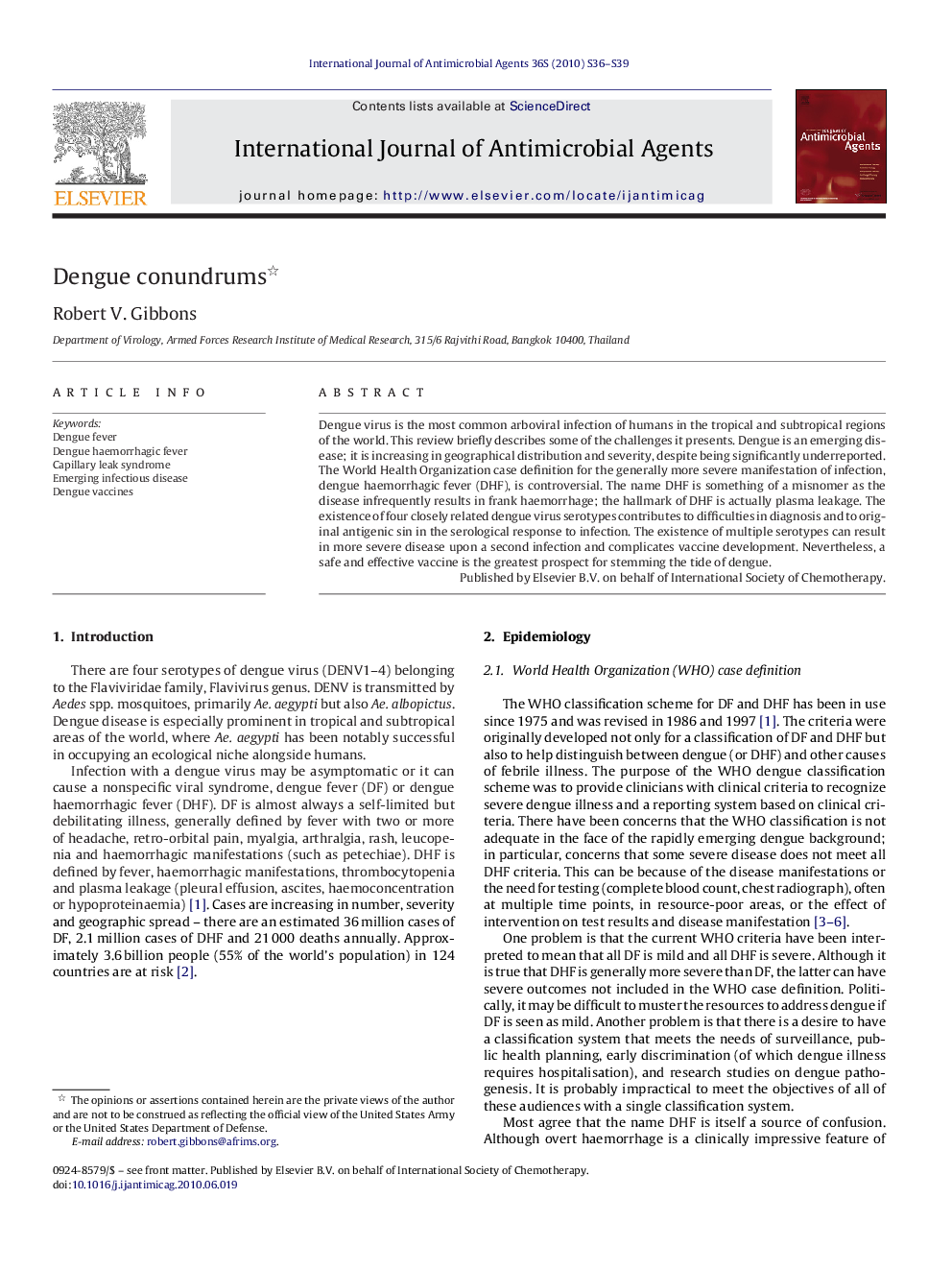| Article ID | Journal | Published Year | Pages | File Type |
|---|---|---|---|---|
| 3359688 | International Journal of Antimicrobial Agents | 2010 | 4 Pages |
Dengue virus is the most common arboviral infection of humans in the tropical and subtropical regions of the world. This review briefly describes some of the challenges it presents. Dengue is an emerging disease; it is increasing in geographical distribution and severity, despite being significantly underreported. The World Health Organization case definition for the generally more severe manifestation of infection, dengue haemorrhagic fever (DHF), is controversial. The name DHF is something of a misnomer as the disease infrequently results in frank haemorrhage; the hallmark of DHF is actually plasma leakage. The existence of four closely related dengue virus serotypes contributes to difficulties in diagnosis and to original antigenic sin in the serological response to infection. The existence of multiple serotypes can result in more severe disease upon a second infection and complicates vaccine development. Nevertheless, a safe and effective vaccine is the greatest prospect for stemming the tide of dengue.
